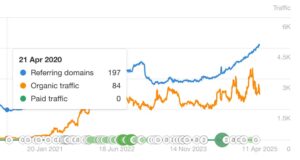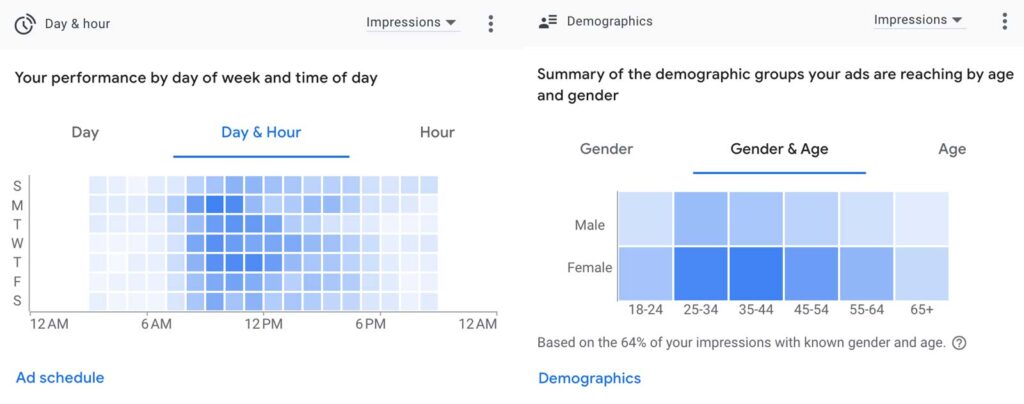Let’s talk about something that keeps many business owners up at night – those ever-growing digital marketing costs. If you’ve ever looked at your Google Ads bill and winced (trust me, you’re not alone), you might be wondering if there’s a better way to invest your marketing dollars. Spoiler alert: there is, and it’s called SEO.
The Money Pit of Paid Advertising

Don’t get me wrong – paid ads definitely have their place in the marketing world. They’re like that flashy sports car that gets you where you need to go quickly and turns heads along the way. But just like that sports car, the maintenance costs can really sneak up on you.
Here’s what typically happens: You start with a reasonable budget, see some initial results, and then gradually watch as:
Your cost-per-click creeps higher and higher (anyone in professional services knows those $30+ clicks all too well)
Your competitors jump into the same auction-based system, driving prices up even further
And the most painful part? The moment you stop feeding the machine, all that visibility vanishes into thin air. It’s like you’ve been renting prime real estate on the internet, and the landlord just changed the locks.
I remember chatting with a law firm owner who was shocked to discover they’d spent over $80,000 on Google Ads in a year with increasingly diminishing returns. “We could have hired another associate for that money,” they told me. They weren’t wrong.
SEO: The Smarter Long Game
Think of SEO as the difference between renting and buying a home. Sure, renting (paid ads) gets you in the door immediately with minimal fuss. But buying (investing in SEO) builds equity over time that you actually own.
Building Your Digital Equity

Here’s what makes SEO different:
It’s cumulative. Unlike paid ads where yesterday’s spend is gone forever, the work you put into SEO today continues paying dividends months and even years down the road. That blog post you publish today might still be bringing in leads three years from now.
You’re creating assets, not expenses. Each piece of optimized content becomes a digital asset on your balance sheet – something that works for your business around the clock without asking for a raise.
I love how one of our clients put it: “With our paid ads, we were basically starting from zero every Monday morning. With SEO, we wake up to leads that came in while we were sleeping.”
The Trust Factor
Let’s be honest about something – people are getting pretty savvy about ads these days. Many of us have developed what marketers nervously call “ad blindness.”
The data backs this up: roughly 70-80% of users scroll right past those paid listings and head straight for the organic results. There’s just something more trustworthy about a business that appears naturally in search results rather than paying to jump the line.
When you rank organically for terms in your industry, you’re not just getting clicks – you’re getting endorsed by Google as a relevant authority. That’s powerful social proof you simply can’t buy.
Making SEO Work for Your Business
One reason business owners sometimes shy away from SEO is that it can seem technical and mysterious. Let’s demystify it a bit.
Meeting Customers Where They Are

Good SEO isn’t about tricking search engines – it’s about understanding what your potential clients are actually searching for at different stages of their journey:
When they’re just starting to realize they have a problem (like “why isn’t my website generating leads?”)
When they’re actively looking for solutions (“best marketing strategy for professional services”)
When they’re ready to make a decision (“top-rated B2B marketing agencies near me”)
By creating helpful content for each of these stages, you’re essentially placing your business at every possible entrance to the customer journey. And unlike with ads, you don’t pay extra when someone takes a different path to find you.
The Competitive Moat
Here’s something interesting about SEO that many business owners don’t consider: once you’ve established strong organic rankings, they create a natural barrier to entry that’s much harder for competitors to overcome than simply outbidding you on ads.
A competitor can decide tomorrow to outspend you on Google Ads and potentially leapfrog your visibility overnight. But outranking a website with established authority, quality content, and strong user signals? That’s a much bigger challenge that requires significant time and investment.
I recently had a business owner tell me, “Our SEO is basically our most effective competitive advantage at this point. Our competitors would need a year of focused effort to catch up to where we are now – and by then, we’ll be even further ahead.”
Setting Realistic Expectations
Let’s talk timeline, because this is where many businesses get frustrated with SEO. If paid ads are like microwave meals, SEO is more like slow cooking – it takes longer but produces much more satisfying results.

Here’s a realistic picture:
The first few months are about laying foundations. You might not see dramatic ranking improvements yet, but important work is happening behind the scenes.
Around months 4-6, you’ll start seeing movement for less competitive terms and longer phrases. This is when many businesses get their first taste of organic lead generation.
Between months 7-12, the compounding effects really kick in. Earlier content gains more authority, new content ranks faster, and the whole engine starts working more efficiently.
Beyond the first year is where the magic really happens. Your cost-per-acquisition through SEO typically decreases while results continue to improve – the exact opposite of what usually happens with paid advertising.
A financial advisor we work with was initially skeptical about waiting for SEO results. “Six months in, I wasn’t sure if anything was happening,” he told me. “But by month nine, we were getting more leads from SEO than we’d ever gotten from ads, at about a third of the cost. By year two, there was no comparison.”
Finding the Right Mix
Despite everything I’ve said about the pitfalls of paid advertising, I’m not suggesting you should abandon it completely. In fact, the smartest digital strategies often use both approaches in complementary ways:
Use paid ads to get immediate visibility for time-sensitive promotions or new service launches
Leverage SEO for building long-term authority and sustainable lead generation
Let data from both channels inform each other (keywords that convert well in paid campaigns make great targets for organic content)
I like to think of it as paid ads being the sprinter and SEO being the marathon runner on your marketing team. Both have different strengths that serve different purposes.
Taking Your First Steps
If you’re feeling the pain of expensive paid ads and want to start building your SEO foundation, here are some practical first steps:
- Look at what you already have. Many businesses are sitting on untapped SEO potential in their existing website. A technical audit can uncover quick wins.
- Talk to actual customers. Find out what questions they had before working with you, then create content that answers those exact questions.
- Focus on quality over quantity. One comprehensive, helpful piece of content will outperform five rushed, shallow posts every time.
- Be patient but persistent. The businesses that win at SEO aren’t necessarily the biggest or the most technically savvy – they’re the ones who consistently show up and add value month after month.
At 321 Web Marketing, we’ve had the privilege of helping numerous B2B and professional service firms make this transition from ad dependency to organic growth. The most satisfying part is watching clients go from skepticism to enthusiasm as they see their digital marketing transform from a constant expense to a growing asset.
Remember, every business has a choice: continue renting your visibility through an increasingly expensive ad marketplace, or start building digital property that you actually own. The businesses that thrive in the long run almost always choose the latter.
And hey, if you’ve read this far, you clearly have the patience for SEO success – that’s already half the battle!

